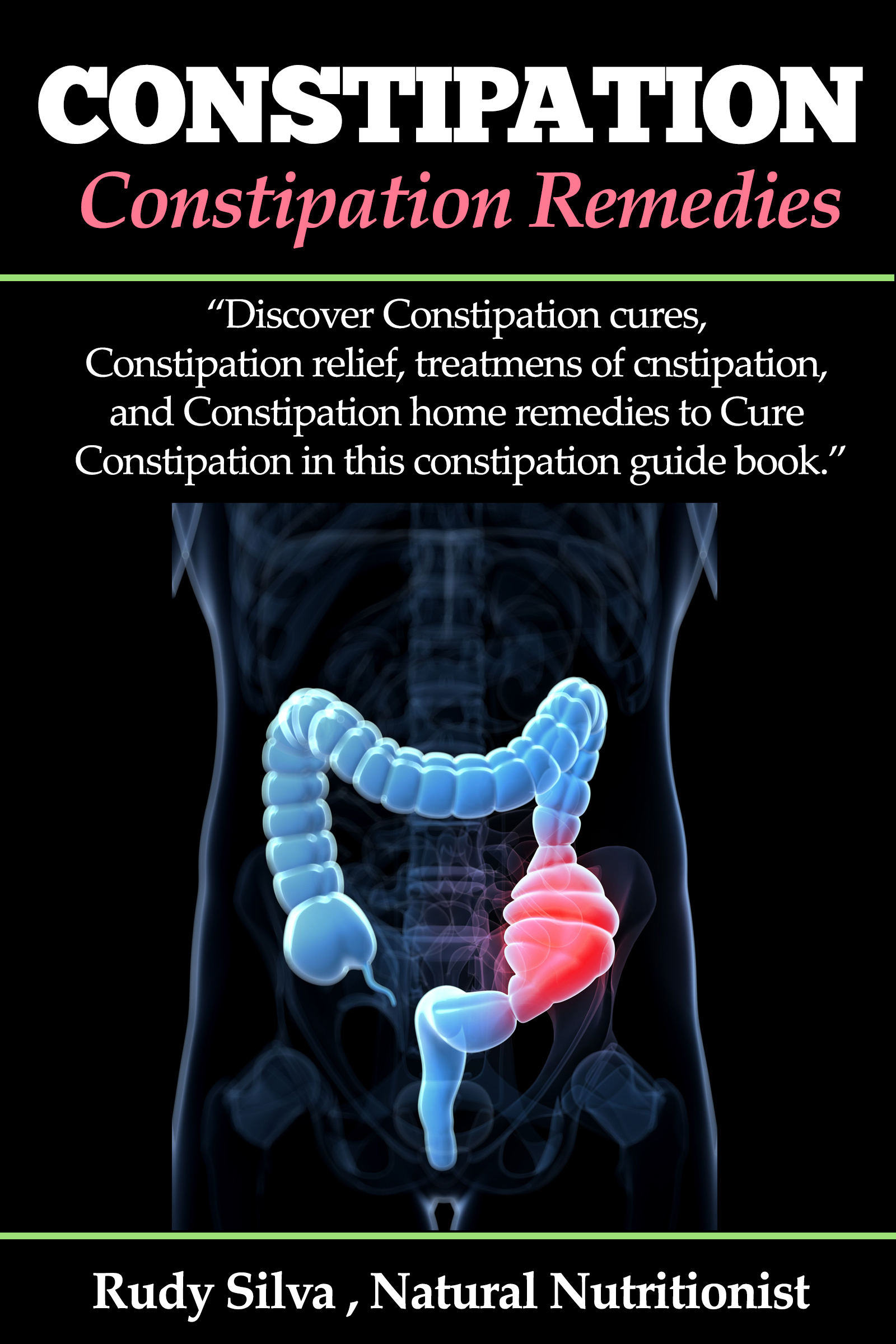Herbal Constipation Remedies Your Mother Didn’t know about-2

One added benefit of psyllium is its ability to pull toxins out of bowel pockets known as diverticula’s.
Psyllium is a popular ingredient in many constipation remedies on the market. Choose a psyllium product that does not have sugar, maltodextrin, or artificial sweeteners. If possible, buy psyllium in bulk form from a health food store, which may offer it in bins. In this form, it is processed less and usually contains no additives.
Here’s how to use it:
For mild constipation, take 1 teaspoon in a glass of juice or warm water 3 times a day.
Health Tip: Work up to taking one teaspoon of psyllium by starting with a ¼ teaspoon in a glass of water or juice, the next day ½ teaspoon and so on until you are taking one teaspoon. Do the same when considering taking up to 2 teaspoons of psyllium.
Start by taking 1 teaspoon just before going to bed. After drinking your glass of psyllium seeds, follow this up each time with another 8 oz of clear distilled water.
For moderate constipation, take 2 teaspoons in a glass of juice or warm water daily. Start by taking 2 teaspoons at breakfast time.
It can take up to 3 days to get relief and that depends on the dose you take.
Use psyllium seeds with care. Some cases have been found where psyllium seed parts have lodged in your colon wall, causing an irritation. When using excessive psyllium seeds, it is possible that it can deposit on your colon wall if you already deposited toxic waste there. This adds to the encrustation along your colon wall.
Health alert: Continue to drink water during the day, up to 8 glasses a day, when using psyllium seeds. This helps push the seeds through your colon and not deposit along your colon walls. Remember the seeds bulk up and absorb water and you don’t want them to cause constipation by bulking up and getting stuck in your colon.
Health Tip: Use psyllium seeds only long enough to relieve your constipation. Excessive use of psyllium can cause allergic reactions and can cause constipation if used incorrectly.
Agar-Agar and Psyllium seeds
Agar and Psyllium seeds are mostly soluble fiber, which absorbs a lot of water and brings it into your colon. This creates bulk in your colon, which puts pressure on your colon walls leading to peristaltic movement.
In his book, The Encyclopedia of Natural Health, 1962, Max Warmbrand, N.D., D.O., recommends that,
“Remedies containing agar-agar or those manufactured from psyllium seeds or other water-retaining substances are often used to relieve constipation. These remedies act up your colon because of their build and because they absorb a great deal of water, which is then carried into the large intestine. We do not object too strenuously when these remedies are used to meet a temporary need but must stress the fact that while they provide relief, they will not correct the underlying weaknesses which can be done only through the use of good foods, corrective exercises, and a rational way of living.”
Agar-agar is seaweed, which is also known by other names –dai choy goh or kanten. Like psyllium, it is mostly soluble fiber. One disadvantage of these fibers is that once they form their bulk in your colon they hold in nutrients that should be absorbed through your colon walls.
Agar is useful in improving digestion, pulling toxins out of your colon and reducing hemorrhoids.
Method 34: Ginger
Ginger acts as a transporter to deliver herbs to a specific organ. It contains an oil called Ginerol. It is a resin type oil that binds to other herbs in an herbal formula and helps delivers them to your colon. If a particular herb works on a specific organ, then ginger acts as a transporter to deliver that herb to that specific organ
Ginger can stimulate your colon to peristaltic action. It can be used as a capsule or as a tea often to keep your bowels moving. In difficult constipation issues, ginger can be used as an enema and at the same time taken as a capsule. It is a gentle colon stimulant.
Ginger is best used in combination with other herbs such as cascara sagrada or rhubarb root. Ginger reduces the discomfort of these strong laxatives and helps to strengthen weak colon walls so peristaltic movement is regained.
Health Tip: Ginger has not been tested to determine its effects on pregnant women. It may not cause a problem, but it is best not to take ginger while pregnant or to consult with your obstetrician before taking it.
In the book, 10 essential herbs, 1992, Lalitha Thomas gives the ginger combination to relieve constipation.

“Chop one oz. fresh Ginger root or one tablespoon of Ginger power. If the root is not available, add to this 2 Tablespoons of whole flax seeds Simmer in 2 cups of distilled water for 15 minutes Add honey, unsulfured molasses, or pure maple syrup to taste.”
Thomas recommends drinking 1-2 cups of this tea daily and points out that it is safe for children to use but half of this dose.
Method 35: Kyolic
Kyolic is a special garlic preparation, which is aged for 20 months in stainless steel tanks. With this aging, garlic odor is eliminated and certain chemicals are enhanced – S-allyl-mercaptocysteine, S- allyl-cysteine. These chemicals are powerful sources for fighting various diseases – cancer, heart and liver disease.
Kyolic cleanses, soothes, and reduces inflammation throughout your gastrointestinal tract. It is rich in potassium, which is necessary for colon wall contraction.
Kyolic is also effective in killing pathogens and bad bacteria that live in your colon and elsewhere in the body. It also binds to heavy metals and other toxins that exist in the blood and colon and sweeps them out of the rectum. Aside from helping in constipation, it is helpful for reducing,
- fungus and other bacteria in your ear
- skin lesions due to bites or insect stings – use liquid form
- arthritis – requires 12 capsules a day
- diabetes – requires 12 capsules a day
You can buy it in capsule and liquid form. Capsules are easy to take and have no side effects.
Here’s how to use it,
- For mild cases of constipation take 2 tablets once or twice a day. For moderate cases take 2 tablets three times a day
- For severe cases take 2-tablests five times a day
- Or if you prefer you can take 4-5 kyolic capsules just before going to bed
- Continue this untill your constipation is cleared. You can combine this Kyolic remedy with the apples and spinach remedy to help rebuild and remove toxic material, which is built up along your colon walls
- Continuous use of Kyolic is not harmful. It is the allicin in garlic that provides the stimulation to your colon to produce peristaltic movement
- Kyolic can be bough in health food stores or on the internet. You can type in Kyolic into the google search engine to find where you can buy it.
Health Drug Alert: Garlic has blood-thinning abilities. Using it with blood-thinning drugs, pentoxifylline, NSAIDs is potentially dangerous since excessive blood thinning can increase blood- clotting time. Do not use 3 days before any surgical procedure.
Garlic can also cause an allergic reaction or an upset stomach in some people.
Do not use garlic if breastfeeding. Garlic can get into the breast milk giving the baby colic.
Method 36: Aloe Vera
Health Alert: Menstruating or pregnant women should not use Aloe Vera, in any form, as a laxative.
Aloe Vera is a wonder herb that has been around for thousands of years. It has been used for both external and internal problems – skin rashes, burns, ulcers, internal bleeding. It also promotes bowel movements, which help to relieve constipation. I have found that some people are allergic to Aloe Vera. So if you show a rash or have any other undesirable symptoms, do not use it.
Aloe is an astringent, acts to tighten muscles, and has purgative and laxative action – dispels fecal matter that has collected in your colon. There are many aloe vera gel products to choose from. For best results, choose an aloe gel that is close to that of fresh organic aloe whole leaf gel.
Take two tablespoons of pure aloe vera gel mixed with apple juice. You can use other types of juices that fit your taste.
If you use aloe juice drink, mix 1/3 of aloe juice with 2/3 of a juice you like just before bedtime and just on awakening.
Or, if you can handle the taste of the juice, drink a glass of Aloe Vera juice as soon as you wake up and one just before bedtime.
This will promote a bowel movement when you wake up.
Aloe Vera can also be taken in capsules. Because aloe can have a strong gripping action, it is best to take this herb with a calmative herb such as turmeric. Aloe can also be mixed with powdered fennel seeds. But, you can take aloe as described above and see how you react to it. I know many people who take it without turmeric and they don’t have any side effects
The best aloe vera is, of course, fresh aloe gel from a leaf. Look for an aloe that has been hand and not machine pressed. When aloe has been machine pressed, it can be contaminated with the yellow sap that is contained in the outer skin of the aloe leaf.
This yellow sap has strong laxative and irritating action in the gastrointestinal tract. A good aloe should not have more than 10 parts per million of yellow sap.
Health Drug Alert: Aloe has been shown to lower blood sugar levels. Diabetics may find a need to lower medication dosages when using aloe for a long time. But monitor this with your doctor.
In addition, aloe vera has a cleansing action and restores a healthy balance of the good bacteria in your colon.
Health Tip: Use aloe for 5 days and then rest for 2 days.
Using aloe on and off like this can help to reduce allergic reactions from long-term use.
Typical recommendations are:
- Aloe gel – 2 tablespoon each day
- Aloe vera juice -1 quart each day
- Aloe vera juice concentrat – 5 g up to 3 times each day
Health Tip: If pregnant do not use aloe vera. It has not been studied for women during this period.
Drinking peppermint tea when taking aloe vera capsules can turn aloe vera into a mild natural constipation remedy. You can also mix aloe gel with peppermint tea to form a constipation drink.
If you like the aloe vera drinks that are available drink no more than 1 quart per day.
Method 37: Barks and Roots
Black Walnut
The inner bark of the black walnut tree provides a mild and gentle remedy for constipation. Look for the black walnut herb in other herbal combinations or make your own combination and add black walnut to your formula.
The black walnut herb is also available as a liquid, tincture, or capsule. Look for this product on the internet.
Slippery Elm Inner Bark
Slippery Elm is effective in relieving constipation. It coats and rejuvenates the entire digestion tract by healing any sores or ulcers. It also is high in soluble fiber.
It comes as a capsule or liquid extract. It is safe and effective for children when used as a tea. You can add a bit of honey to make the kids drink it.
Yellow Dock Root
Yellow Dock is useful in providing a mild to medium laxative action. It acts to stimulate colon peristalsis. It contains Chrysophanic acid and Emodin. Yellow dock root has some antibiotic qualities, is a blood purifier, stimulates the flow of bile, and works on various skin diseases – eczema, hives, and psoriasis.
Look for herbal combinations that have this herb.
Oregon Grape root
Oregon Grape root is effective as a laxative and combines well with cascara sagrada and yellow dock root for a more effective laxative mixture. Oregon grape is a gentle liver stimulant that helps to release bile. It is used in all kinds of liver diseases. In addition, Oregon grape helps to detoxify the blood.
Make a tea with 2 parts Oregon grape root to ½ part cascara sagrada.
Drink 2 oz. at a time, once or twice a day as necessary.
Marshmallow Root
Marshmallow root is gentle laxative and will move fecal matter out of your colon. Use marshmallow root as a tea.
Boil one cup of distilled water. Stir in one heaping teaspoon of marshmallow root. Cover pot and let the tea sit for 10-15 minutes.
Then, strain the tea and drink it. Take one cup in the morning and one in the evening.
Method 38: Peppermint Oil
Peppermint is used to soothe the nerves and is useful in relieving cramping constipation. It contains oils that stimulate the release of bile from the gallbladder. It also improves the function of the cells along your colon walls.
Health Tip: Use peppermint oil as an enteric-coated capsule so the capsule does not dissolve in the stomach but in the small intestine.
In the small intestine and colon, peppermint relaxes the muscles and promotes the release of gas.
The recommended dose of peppermint oil is 1 capsule three times each day between meals. Use peppermint oil only as recommended on the package.
You can also add 2 drops of peppermint oil in an 8 oz. of water and drink after a meal.
Health Alert: Peppermint oil contains menthol, which is poisonous when an overdose is taken. Always follow the recommended manufacturer’s dose. If pregnant, do not use the enteric-coated peppermint oil. Do not give peppermint tea or oil to young children.
Method 39: Golden Seal
Goldenseal has the compound, Hydrastine that gives it antiviral and antibiotic properties. It is used to fight off different types of infections internally and externally.
You will see a golden seal in some of the herbal formulas for constipation because of its properties to soften fecal matter and to regulate liver functions. It stimulates digestion and bile production, which in turn promotes peristalsis. It also heals the mucosa, your colon wall lining.
Goldenseal is considered one of the top 10 herbs in the herbal world.
Health Alert: Do not use Goldenseal for more than a week. Do not use it if you are pregnant. Check with your doctor before using it, if you have diabetes, glaucoma, cardiovascular disease, or high blood pressure.
Do not use more golden seal than the recommended dose. In large doses, goldenseal may create cardiac arrest or respiratory problems.
Method 40: Chlorophyll
Chlorophyll is the green substance that occurs in all plant and is one of the most helpful substances you can add to your diet. It helps to strengthen and thicken your colon cell walls. It inhibits the growth of pathogenic bacteria, which can cause various diseases and feeds the good bacteria.
It detoxifies the cells in your body and colon, which houses an unbelievable amount of toxic matter.
Chlorophyll will help to get your bowels moving by improving your colon function. Use chlorophyll with any of the other methods you use to clear your constipation.
Take 2 capsules of chlorophyll just before meals
The way that I use chlorophyll is by combining 1-2 oz. liquid chlorophyll, juice of one lemon, and 8 oz. of distilled water first thing in the morning. This combination sits really well in my stomach and I have never had an upset stomach from this drink.
You can also add one or two tablespoons of chlorophyll to a glass of one-half orange and one half grapefruit juice. With this mixture, you will not taste the chlorophyll much.
Health Tip: Chlorophyll is considered safe for pregnant and lactating women.



